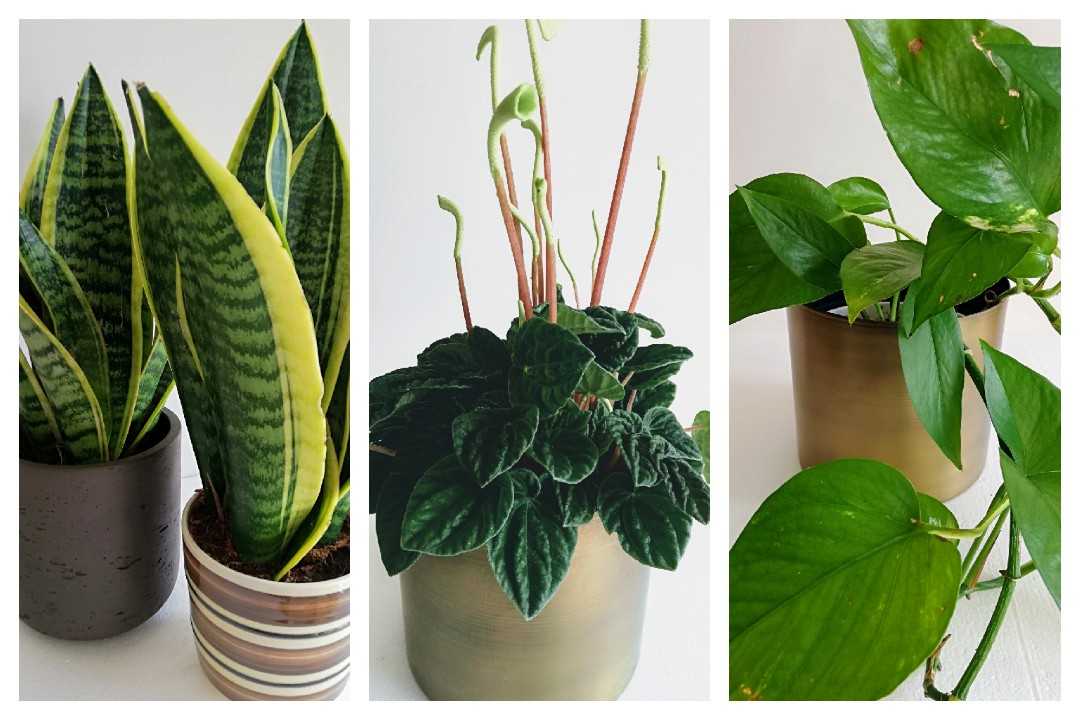Easycare houseplants
No one looking to buy a houseplant ever says "do you have something that's really hard to look after". Nope, the question is always something along the lines of "do you have something that's really EASY to look after," quickly followed by the statement: "I usually kill plants".
It's very sad, even when I've assured the customer that the plant I'm selling them is very easy to look after some still walk away unconvinced that they will be able to keep their new plant alive and well. But it doesn't have to be like that. There really are lots of house-plants that are very low maintenance and not so easy to kill. So here are a a few of my favourites that should also be fairly easy to source and won't cost you the earth.
One of the easiest plants that I can think of is the Sanseveira, also known as Mother-in-law's-tongue or snake plant. It's not the prettiest plant in the pot but I've grown to love it's thick tall leaves with their tiger-like markings and I especially like the variety Black Gold, its leaves are edged with a thick yellow stripe giving it a little more personality than its plainer cousins. This plant stands tall and proud giving it an architectural quality that sits well with minimalist decor and it's virtually industructable. It will tolerate light and shade and you can forget to water it for weeks with little or no adverse affect. You do have to water it sometimes though, but just a little at a time so that it doesn't get soggy. It's also one of the best air-purifying plants you can buy and is particularly good in bedrooms because it releases oxygen at night which helps us breath more easily and therefore sleep better.
Some of my most favourite houseplants belong to the Pepperomia Carperata family. I love them!
They're very easy to look after and there are lots of different varieties to choose from. Their main attraction is their foliage which tends to be very green and lush with ovate leaves and very few, if any, flowers but do look out for Peperomia Lilian (pictured) which produces some very strange-looking flowers which I think look just like hockey sticks. Another lovely member of this family is Peperomia Pilea - also known as the Chinese money or fortune plant. It seems to be quite trendy at the moment and it's said that if you plant a coin in its soil, it will bring you instant wealth! The only time I tried this, I received a very nice, and unexpected, rebate on my electricity bill the following day so I guess it kind of works.
Most Peperomia will tolerate low to bright light, although they don't like to be in direct sunlight, and they should be watered sparingly: leave the soil to dry to about an inch or two deep before watering. They don't like soggy bottoms so don't leave them soaking in a pot of water. If their leaves start to drop off it's usually a sign that they have been overwatered.
I have also grown to appreciate Epipremnum Aureum, or Devil's Ivy, as it's more commonly known. It's a pretty fast-growing trailer with glossy ivy-like leaves that will drape and trail down and across shelves and walls. I have two on my bookcase, and they really add some movement and flow to the rows of static books. Again, these plants will tolerate low light, don't need watering too often, and also purify the air.
Finally, I have to talk about succulents. There are millions of them - ok maybe not quite millions, but there are a lot! And again, they are very popular just now. The best thing about them is that they are drought tolerant so if you're someone who forgets to water your plants, go for one of these. This doesn't mean that they don't like water at all. You do have to water them but the best thing to do is let the soil dry out to about an inch or two deep and then give them a really good soak. Allow the water to run through the pot until it's nice and heavy and you can see that the soil is wet. Most succulents like a bright sunny spot including direct sunlight and good drainage so make sure the pot has holes at the bottom, and if you're re-potting use a specialist cactus soil or add some perlite or sand to standard compost.
As a general rule, most houseplants need less water during the winter months than in summer and they like a bit of plant food which should be given during the growing season, usually spring and summer, but when you buy your plant check the care instructions to be sure. I find more people kill their plants with kindness rather than neglect. Over-watering is far more common than under watering and not giving them enough light is another failing. If you have to keep your light-loving plant in a dark room then take it out occasionally and leave it somewhere light for a few hours so that it can soak up some much-needed natural light.
I hope you've found this useful. Thanks for reading and stay safe.

